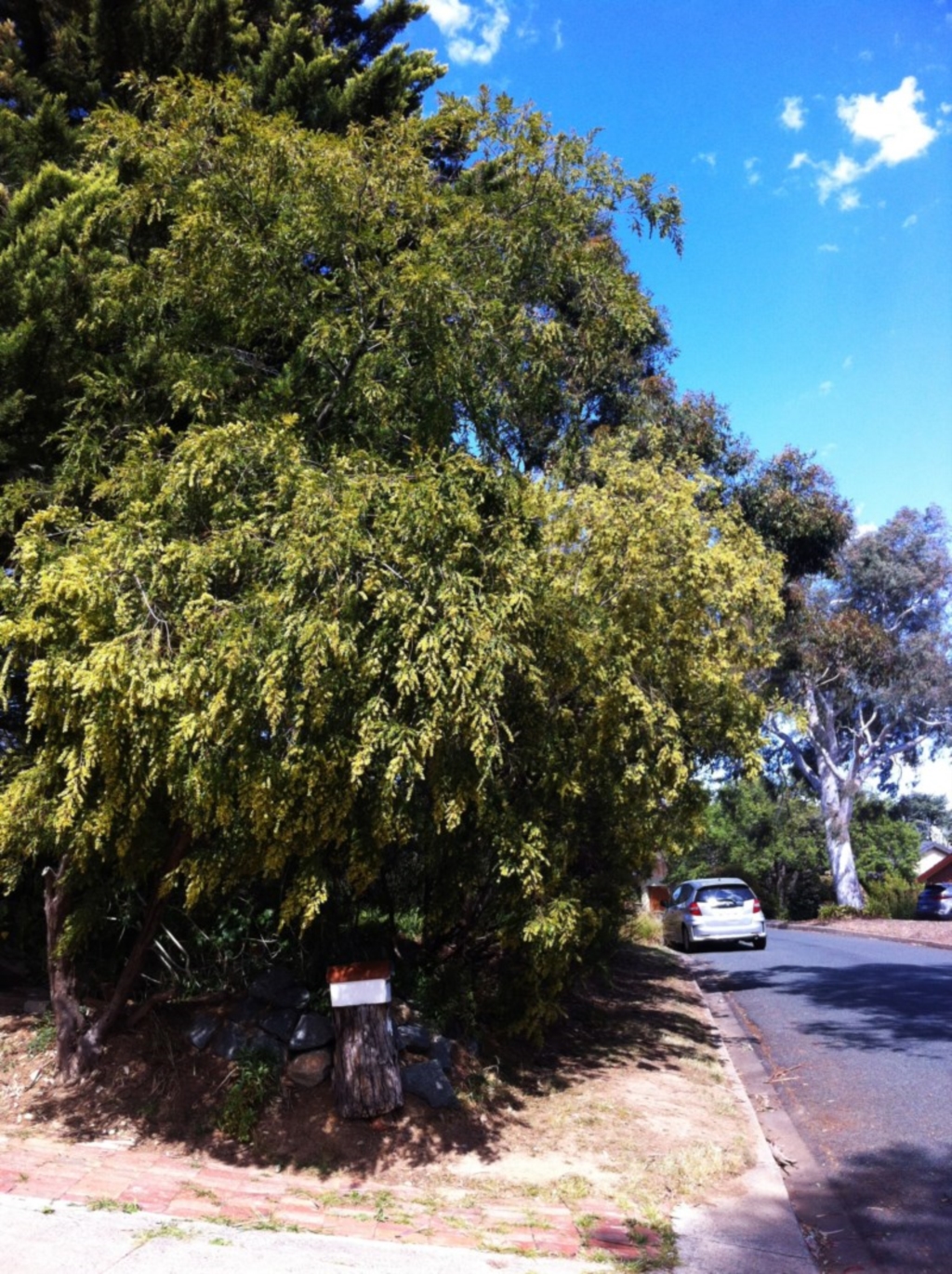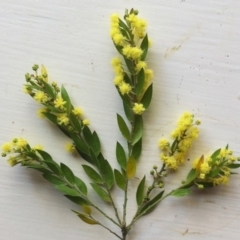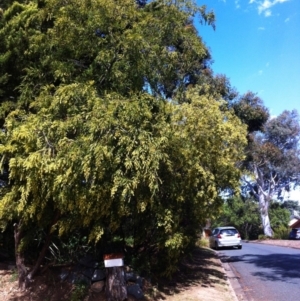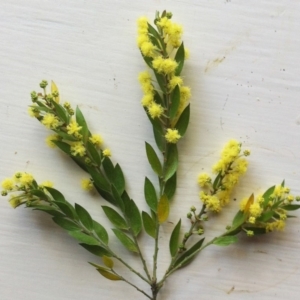Sticky Wattle at Hughes, ACT
Identification history
| Acacia howittii | 26 Sep 2017 | BettyDonWood | ||
| Acacia buxifolia subsp. buxifolia | 24 Sep 2017 | BettyDonWood | ||
| Unidentified | 24 Sep 2017 | ruthkerruish |
Identify this sighting
Please Login or Register to identify this sighting.
11 comments
BettyDonWood
wrote:
25 Sep 2017
The flowers and leaves look OK for buxifolia, but the tree is a lot bigger than I would expect.
ruthkerruish
wrote:
25 Sep 2017
We have Acacia buxifolia in our woodland, leaves are more bluey green and stiffer but I am not sure what the subspecies would look like. The trees were planted decades ago.
BettyDonWood
wrote:
25 Sep 2017
Subsp. buxifolia is the local one. What does the label on the tree say? If it says Acacia buxifolia, I think this is one to take a specimen to the botanic gardens.
ruthkerruish
wrote:
25 Sep 2017
The ones in question are street trees planted about 30-40 years ago - I accept your ID. The dilemma for me is that the ones we planted in the woodland several years ago as the local A. buxifolia from GA are not quite the same!
BettyDonWood
wrote:
25 Sep 2017
The problem is that both Plantnet and World Wide Wattle state that Acacia buxifolia is a shrub to 4 m tall. There will be a record of what was planted. What is the street name?
BettyDonWood
wrote:
25 Sep 2017
The leaves look too broad for fimbriata, which according to World Wide Wattle has a l:w ratio of 5:25. When I blow the leaves up I can see no evidence of appressed hairs along the margins, which I would expect in fimbriata. I have checked the official plantings in Hughes in 'Trees and Shrubs in Canberra'. No wattles like this one unless they were in "mixed plantings". Which suggests it was privately planted.
Varanus
wrote:
25 Sep 2017
Thanks Betty. It fits the general morphology and features of a plant which has been grown for a long time in the ACT as Acacia fimbriata. Yes, I agree that A. fimbriata more often than not has the fringing marginal hairs on the phyllodes, but some descriptions of this species state that the margins can be glabrous (e.g. Plantnet) Phyllode length and width appears to comply with various descriptions of A. fimbriata. Ruth, I would also be interested in obtaining a fresh specimen of this tree tomorrow if you can advise where it is located.
ruthkerruish
wrote:
26 Sep 2017
48 Poynton Street Hughes. The row of them would have been there for decades and planted privately. Their location is also on CNM. Thank you all for the interest in the wattles. I thought that as an original resident of Canberra's first "new suburb" of the 1960's I would check out the ones in Hughes.
Mike
wrote:
26 Sep 2017
The phyllodes look a bit short for A. fimbriata. I think fimbriata is a bit later to flower (at least on Isaacs Ridge).
Varanus
wrote:
26 Sep 2017
Well, all I can say is that there is nothing like seeing the actual tree "in the flesh", so to speak. I did not even have to get out of the car to see that the line of trees is oh so obviously Acacia howittii.
Location information
- Coordinates 149.096689-35.336700
- Altitude 576.2m
- Places Hughes, ACT
Sighting information
- 6 Abundance
- 24 Sep 2017 10:23 AM Recorded on
- ruthkerruish Recorded by
Additional information
- True In flower
- 1 metre to 5 metres Plant height
Species information
- Acacia howittii Scientific name
- Sticky Wattle Common name
- Not Sensitive
- Non-local native
- Minor Weed or Pest
- Up to 734m Recorded at altitude
- Machine learning
-
In flower
Record quality
- Images or audio
- More than one media file
- Confirmed by an expert moderator
- Nearby sighting(s) of same species
- GPS evidence of location
- Description
- Additional attributes







